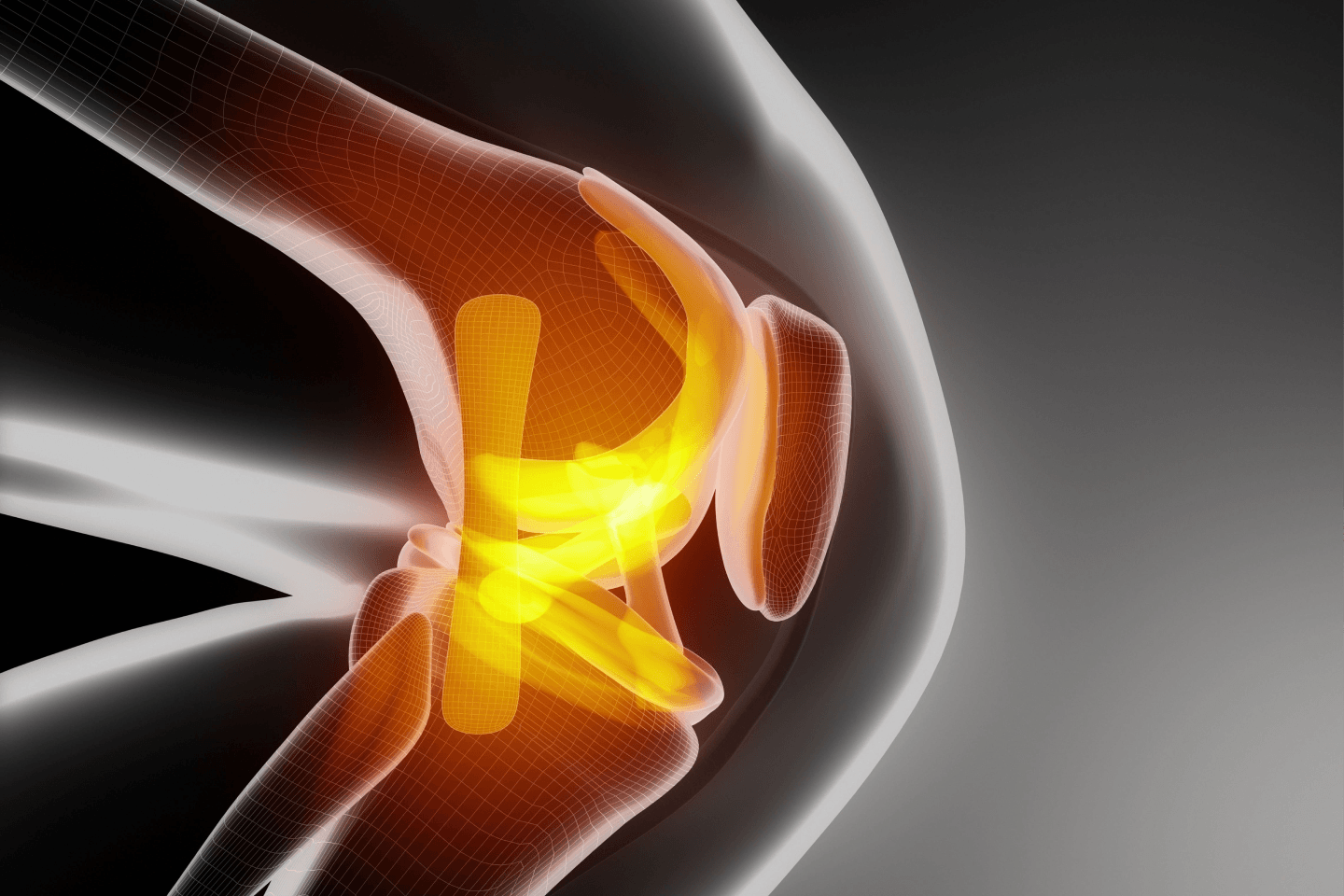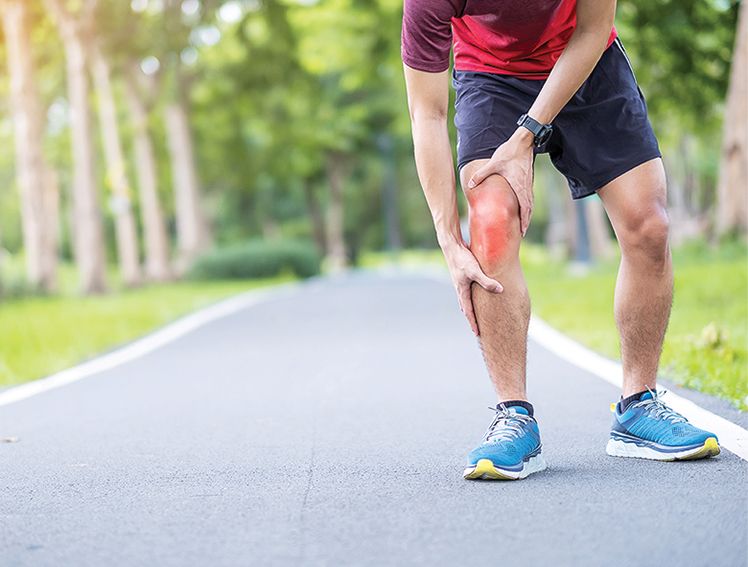
Introduction
The knee is an extremely important joint in the human body. Unfortunately, it is also often prone to injuries. The knee has an extremely important bone called the patella, which is also called a kneecap. The patella is situated at the front of the knee and helps provide the knee with structure. It also ensures that the knee moves properly the way it should. Due to its vulnerable placement at the front of the knee, the patella is easily prone to injury.
This article will discuss all you need to know about patellar injuries. We will understand the types of patellar injuries, look at the symptoms, discuss causes, and explore treatments.
What are the types of patellar injuries?
Here are some of the main types of patella injuries:
- Kneecap dislocation: A kneecap dislocation occurs when the kneecap comes out of the femur, which is the thighbone. The kneecap will need to be fitted back into place to resume normal function.
- Fracture: A fracture commonly occurs during accidents that directly impact the patella. A simple fracture is one in which the patella has split into two pieces. The patella can also be broken into several bits if the impact is powerful and direct. This kind of complicated fracture injury requires surgery.
- Inflammation: If the patella becomes inflamed, its cartilage can get damaged.
- Patellar tendon tear: Sometimes, the patellar tendon can tear. More minor tears can heal in about 6 weeks; however, larger tears can take up to a year for the patient to completely recover.
Other types of patellar injuries include bursitis, patellar tendinitis, and subluxation of the kneecap.
Symptoms of patellar injuries
Kneecap injuries are marked by symptoms that are quite common to other injuries which affect your bones. Some of these symptoms include –
- Swelling in the affected area: The impacted area might swell up due to inflammation which is usually seen with injuries.
- Pain at the site of injury: The affected knee might cause pain that can range from moderate to severe. In moderate cases, you may experience pain while walking or exerting the affected knee. In severe cases, you might feel pain even if you do not use the knee at all.
- Inability to straighten the knee: The knee joint may feel locked up. You might not be able to straighten it.
- Bruises: Any kind of damage or injury to the kneecap will have noticeable bruises.
- Inability to walk: Your knee might not be able to support your body’s weight due to the injury. As a result, you may not even be able to stand up or walk.
- Other symptoms: Kneecap injuries can also have other symptoms. The affected area might be warm to the touch. The patient may also develop fever and chills. It is important to reach out to a doctor immediately for medical help.
Common causes
Patellar injuries can occur because of sports, accidents, or even illnesses.
- Accidents and sports injuries
Any impact to the kneecap can lead to a patellar injury. The kneecap commonly gets injured in traffic accidents or accidents sustained while falling. Such incidents can lead to painful fractures. Many athletes also tend to suffer patellar injuries while playing sports. These injuries could be sustained during falls while playing or when making sudden, sharp movements of the knee joint that can cause damage to the patella. A common example of a sports injury to the kneecap is patellar tendinitis. - Illnesses and health conditions
Children who are born with congenital disorders such as Down syndrome and Cerebral palsy suffer from weakness in the muscles, which can eventually affect the kneecaps. People who have osteoporosis, a degenerative bone disease, can also suffer major kneecap injuries even from a minor fall.
Some people may also have slightly looser ligaments from birth. They are also more prone to kneecap injuries from minor impact to the knee joint.
Diagnosis and treatment
As can be imagined, any injury to the kneecap is debilitating. It may be almost impossible to move and function normally; even simple tasks such as walking around can prove extremely challenging.
A patellar injury can be diagnosed through a series of tests. The doctor will generally start with a physical examination of the affected area. A fracture can be felt through the skin. To confirm the fracture or injury, the doctor will also run a few imaging tests. These will include an X-ray or MRI. The imaging tests may be done for both the knees, even if the other one shows no signs of injury. In some cases, the doctor may even need blood tests to be carried out.
Treatment for patellar injury
The exact course of treatment that is advised for the kneecap depends on the severity and type of injury. Let’s explore some common methods of treatment and home rehabilitation.
- Non-surgical treatment
If the broken patella bones have not been displaced, the treatment can be carried out without surgery. A cast will be used to hold the bones together in place as they heal. During this time, you will generally not be allowed to put any weight on the affected areas. The entire healing process may take anywhere between 6 and 8 weeks. Surgery and physical therapy
Patellar tears and fractures may also require surgical repair. Tears are repaired with the help of sutures, and fractures may need screws or pins to keep the pieces together as they heal.After the surgery, the patient generally needs to undergo physical therapy in order to move the repaired knee properly again and improve the strength of their leg muscles. The patient would have been on bed rest for a while and would need help practising even basic movements. Moreover, the patient cannot put their full body weight on the repaired knee immediately. They need to slowly start by putting partial weight on the repaired knee before being able to once again allow their knee to support their complete weight. This process will involve plenty of physical therapy, which can last up to 6 weeks, depending on how severe the injury was.
Patients are also generally prescribed medicines for the pain. They may also use ice packs for relief in the treated areas.
Sometimes, patients experience certain complications after the surgery. The most common ones among these are posttraumatic arthritis and chronic pain. Patients can also lose the ability to bend or straighten their knees. Your doctor will discuss the possible outcomes of your surgery with you based on your unique condition.
Tips for prevention of patellar injuries
There are a few steps that you can take to prevent patellar injuries from occurring. Athletes and those with existing knee joint issues could make it a point to incorporate these tips into their daily routines to keep their kneecaps in good shape.
- Watch your weight as excess weight puts pressure on the knees.
- If you are planning to start a new form of exercise, begin slowly and take the advice of a professional to prevent any injuries.
- Always wear proper workout shoes to avoid injuries.
- The elderly and those with existing injuries and weaknesses must use a walking stick for support to avoid falling and hurting their knees.
Experience the latest in knee replacement technology
Meril is a global medical device company that brings you the latest in medical technology. With the aim of alleviating human suffering, Meril strives to design and manufacture state-of-the-art medical devices. Opulent from Meril comprises a TiNbN coating with the least wear property, which is 40% lesser than regular CoCr, the hardest surface (8 times harder than CoCr), two times stronger than other implants of a similar category and the most biocompatible non-allergic surface material. Meril also offers a total knee system called FREEDOM which requires very little bone cutting and offers patients optimal high-flexion motion. Both Opulent and FREEDOM have been created with advanced design engineering technology and offer best-in-class technology for knee surgeries.
Conclusion
A patellar injury can be quite difficult to cope with. The physical pain might also be accompanied by an emotional worry as the patient feels unable to move about on their own. This loss of independence can be upsetting; however, it helps to remember that it is only temporary. Make sure to follow the doctor’s advice on caring for your knee after the operation. Do get plenty of rest so that your kneecap heals well.
We hope that this was an insightful read for you today. Take care.
SHARE NOW



